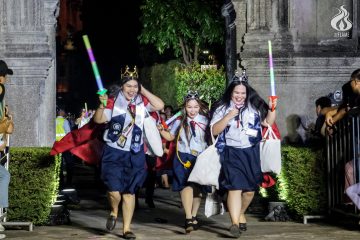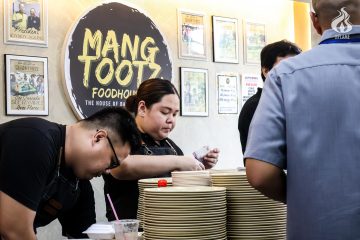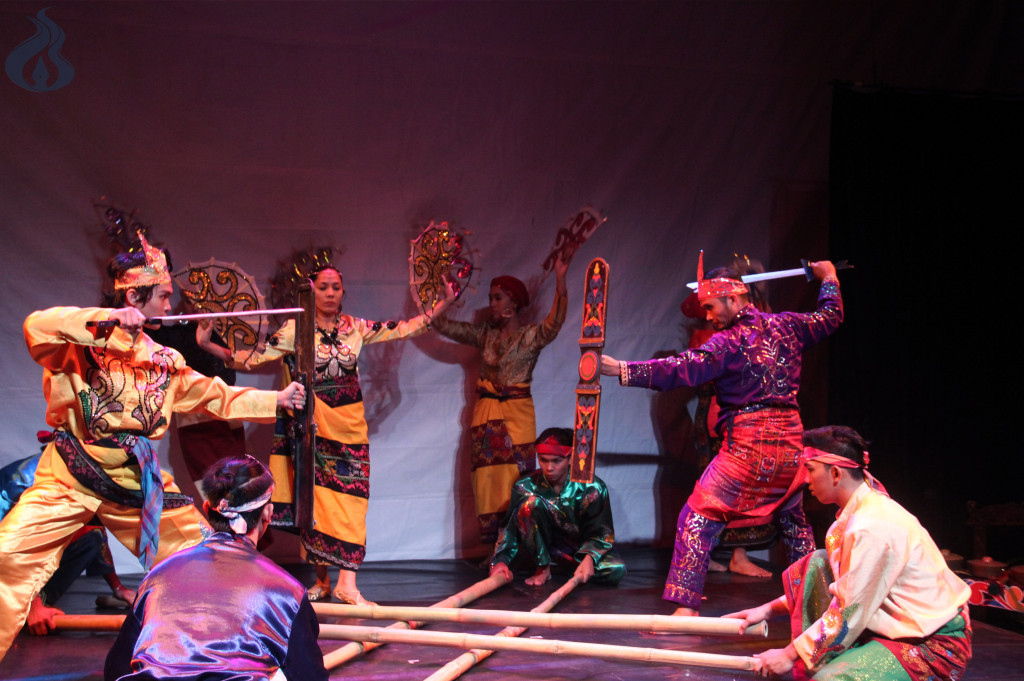
WHAT WOULD you give to learn about Philippine regional literature, witness ethnic song and dance performances, and have coffee with a national artist?
Donating a book as a ticket to this kind of a three-day celebration was certainly on the bucket list. Literature and performing arts enthusiasts gathered at the Cultural Center of the Philippines (CCP) at the launch of the first Performatura Festival last Nov. 6-8, 2015.

Regional rescue of a cultural identity
A king graced the halls of the Bulwagang Alagad ng Sining on Nov. 7, Saturday, during the Performatura Festival. However, Jaspe B. Dula did not acquire his kingship through blood or battle, nor did he rule over vast lands and kingdoms. Instead, the “King of Crissotan” earned his crown by being the most sonorous poet laureate to compete in the 83-year-old Kapampangan verbal joust.
The Literaturo Workshop did not only tackle performing literatures but also aimed for an inclusive bloom of all sorts of Filipino culture embedded in their literature. It calls for the revival and the proliferation of regional treasures like the Crissotan—the folk tradition of poetic debate from Pampanga.
Dr. Juliet Mallari introduced Jaspe B. Dula, along with his fellow maglakandiwas Romeo Rodriguez and Paul Batac, to the audience to bring Crissotan back into light. They reviewed its historical and political footprint on regional literature.
Jaspe, Batac, and Rodriguez then engaged into a lengthy “flip-top-like Kapampangan Balagtasan,” as one spectator described.
“You can make your own identity as a writer [or an artist], and you can start from your heritage,” internationally acclaimed author, researcher, and cultural worker, Dr. Juliet Mallari told The Flame, addressing student writers from all over the country. “[Literature] maintains social cohesion, strengthens ethnic consciousness and deepens it.”
“I focused on Kapampangan culture when I heard that the Pinatubo explosion would have wiped away our rich heritage,” Mallari said.
Today, the threat regional literature faces is the lack of motivation among young people. “We try to motivate young people into joining workshops as active cultural work for revival.”
Mallari adds that there are also efforts to include regional language and literature in the curriculum of many schools. “Some universities are even considering the integration to be a major,” Mallari added.
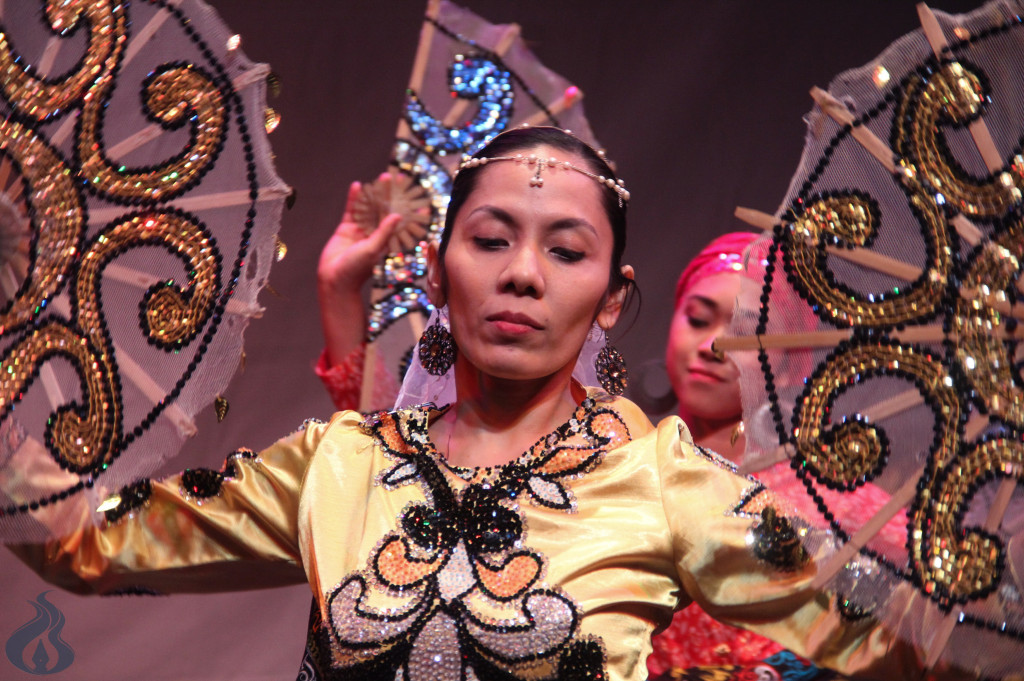
Exploring the ethno-epic Darangen
EPIC CENTER: Darangen with Christine Godinez-Ortega was held at the Tanghalang Huseng Batute (Studio Theater) last Nov. 7, Saturday. Dr. Christine-Godinez Ortega, a professor at the Mindanao State University (MSU), opened the curtains by magnifying vital concepts to be explored about regional heritage and performance.
Darangen, an ethno-epic from the Maranao people of Maguindanao, is a wondrous trek through the colorful culture of the ethnic group. With its eight volumes containing 26 books and approximately 72 000 lines, it immerses its readers into the world of epics during the pre-Islamic period.
Dr. Ma. Cecilia B. Tangian, also a professor from MSU, gave a brief overlook of the culture, traditions, and the traditional lumad laws of the Maranao people.
Bringing the audience to the intricate world of epics, an onor of the Maranao people, Ms. Lominambos Dimatunday performed a chant of a fraction of Darangen using the manner of pa-kini-kin (wavy movements) and pang-apir (fan movements).
MSU’s Kalilangan Music Ensemble had also prepared a captivating musical number as they accompanied another onor, Ms. Caironesa Dimatanday, with her striking way of chanting another part of the epic while stacking basal (kulintang sticks).
Finally, capping the event was a rendition of an episode in the Darangen titled “The Abduction of Lawanen.” Performers from the Integrated Performing Arts Guild of MSU, directed by Steven Fernandez, left the audience filled with newfound knowledge and satisfaction.

Making art out of reality
Leading the surge of talents and ideas that filled the Silangan Hall during the Performatura: Young Poets Space Jam last Nov. 8, the representatives of the University of Santo Tomas Literary Society (UST LitSoc) captured the crowd with their take on college-induced anxiety and depression.
Kimberly Bañadera, Franco Inno Pineda, Denisse Dumpit, and Hannah Felicilda performed three-part monologues. They made use of the Thomasian culture and lifestyle as a setting, lines that ring a bell, mild profanities that entertained without offending, and perfectly-executed expressions and actions.
UST LitSoc presented to the audience a slice of life. It was a package that embodied the journey of most college students. Their performances centered on issues wrapped around dry humor, making art out of something as serious as the issue of students’ mental health under the extreme pressure of college without making light of it.
Various organizations from different universities and regions also took the stage and exhibited the different forms of poetry, demonstrating how each could be used to draw the audience’s attention to social problems that would otherwise be overlooked.
A group of multi-disciplinary artists called ‘Tupada’ conveyed a profound message about the 2016 elections in their performance titled “Kapit Tuko 2016.” Barely using any words, they had the audience at the edge of their seats throughout the act, and they left the viewers deep in thought as they exited the stage.
The Baguio Writer’s Group highlighted the issue of cultural appropriation and identity in the age of modernity with heartfelt performances that hit just the right spots. Words Anonymous, White Wall Poetry, Lira, PNU Balagtasistas, Malate Literary and Musical Folio, and Writerskill also tackled a diversity of issues such as rape, nationalism vs. globalism, love, sexuality, women empowerment, and human rights violation, among others.
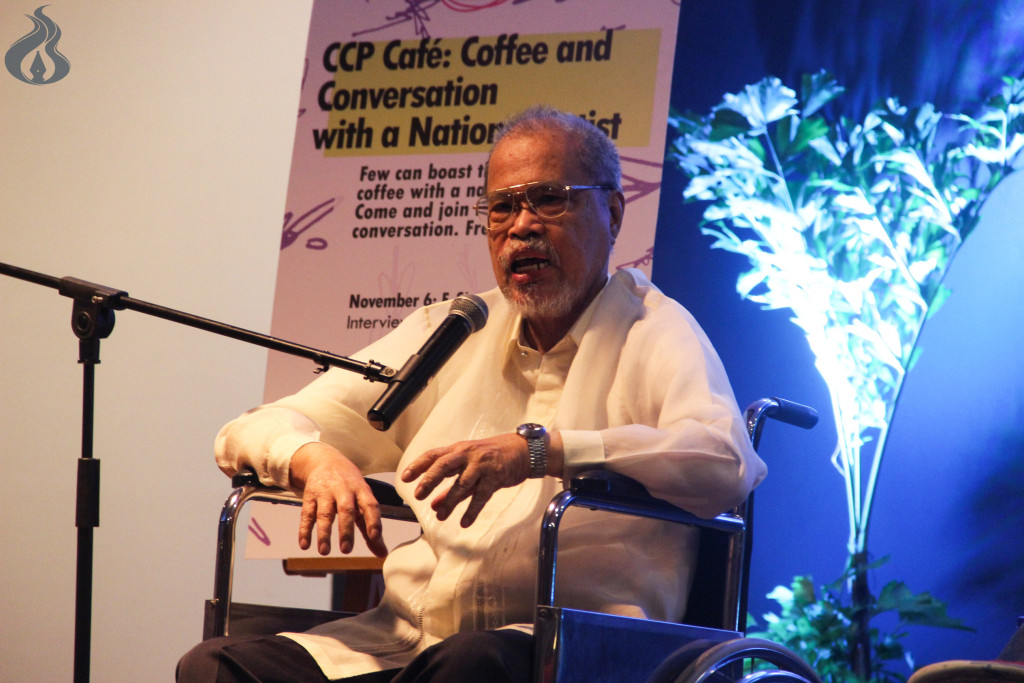
A literary legend amidst a multilingual society
What is it that makes the University of Santo Tomas (UST) home to many of the country’s national artists in literature?
“Meron silang Diyos,” answered Cirilo Bautista last Nov. 8 during the Performatura Festival’s CCP Café: Coffee and Conversation with a National Artist.
“‘Yung philosophy ng education ng UST is something I like. It’s a Catholic University that helps develop writers such as us (national artists),” he told The Flame.
Even before he gained his title, Bautista has always been crowned as a “literary legend,” as Krip Yuson, the host of the event, put it. However, he is often critiqued for having most of his works written in English rather than in his mother tongue.
“Sa tingin ko, ang lenggwahe natin ay hindi Tagalog, hindi Filipino, hindi Ingles, kundi multiple language…[I]t’s a multilingual society. Isinusulat natin ang gusto nating isulat sa pamamagitan ng lenggwahe na nararamdaman nating dapat sa sinusulat natin o kaya ay babagay sa kung ano mang nararamdaman mo sa oras na sumusulat ka,” he explained.
To illustrate, Bautista said that when a writer sits down to create his piece, he does not think of what language it will be in, because the language would already be there and he will simply put it into words, calling language an “emotional choice” rather than a “reasoned choice.”
“…[‘Y]ung lenggwahe, nag-aadapt ‘yan dun sa gusto mong gawin… Hindi mo mapu-puwersa ang lenggwahe, ikaw ang pu-puwersahin ng lenggwahe,” he said. F MARGARET CLAIRE E. LAYUG, MARIA LORRAINE G. SAJORDA, and CHARISSA MAE M. NEMIS

